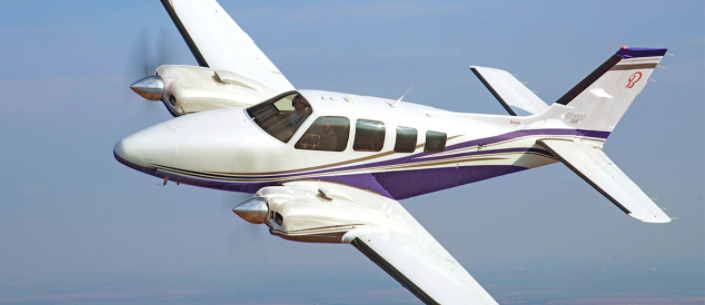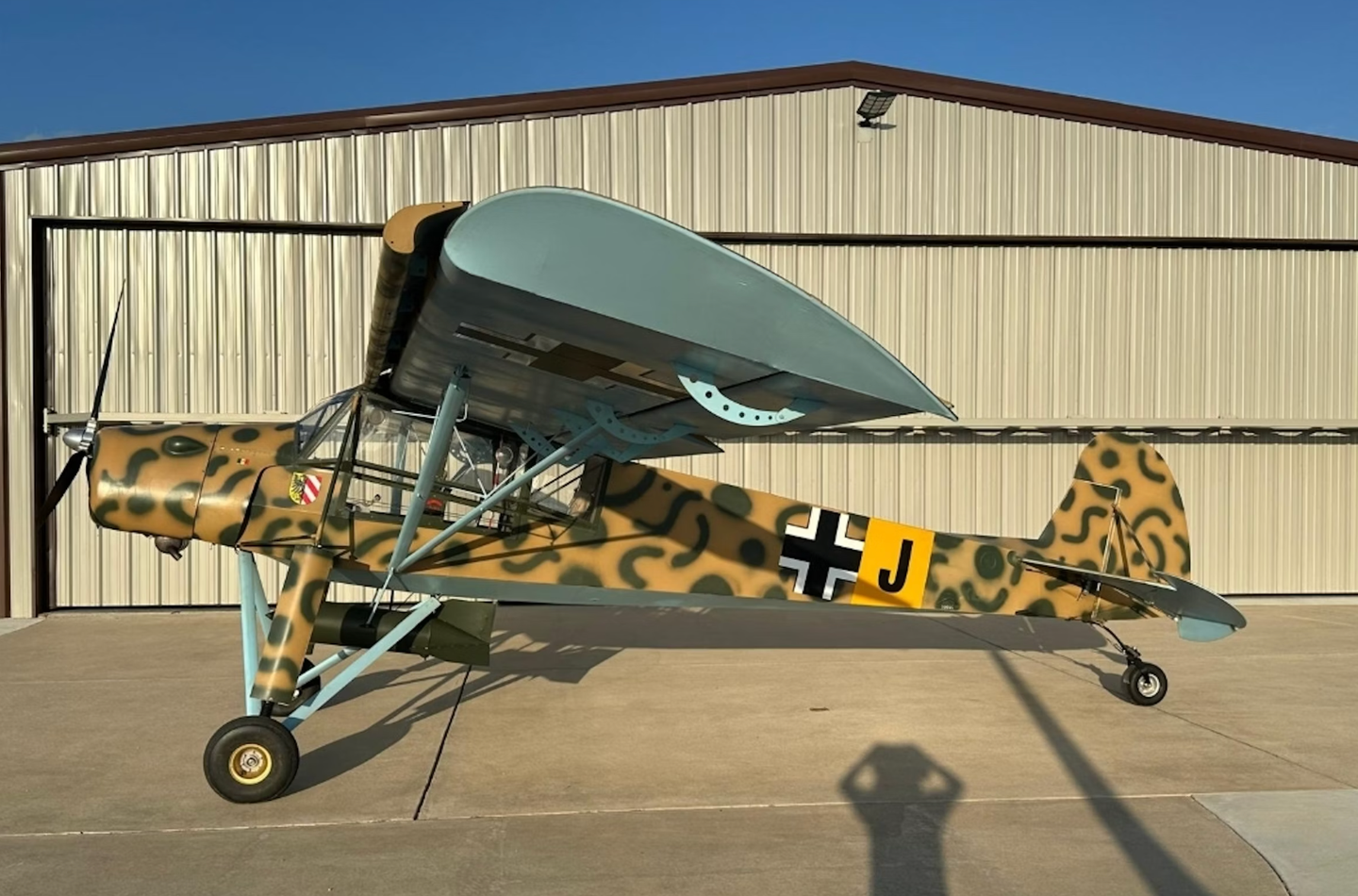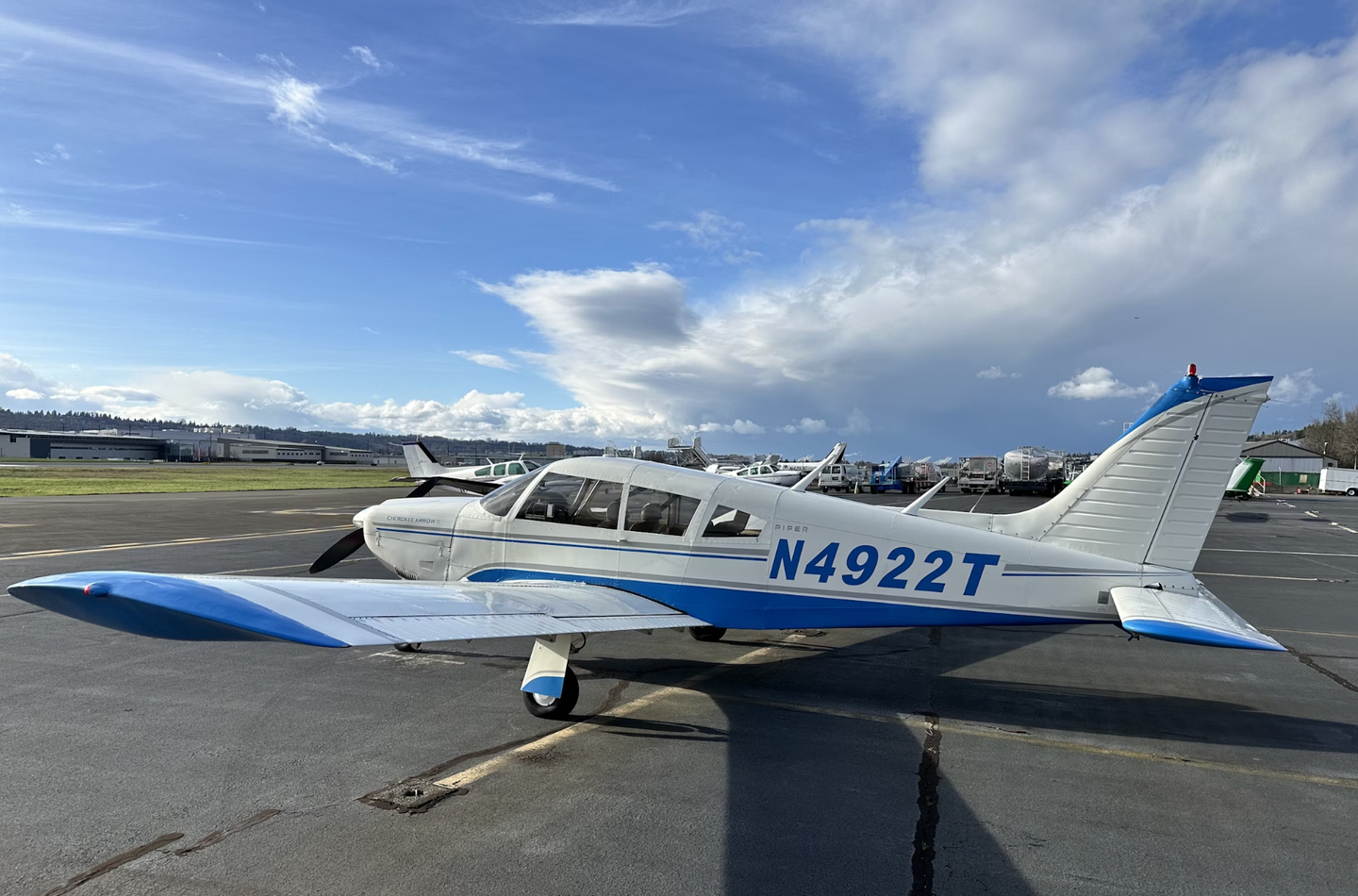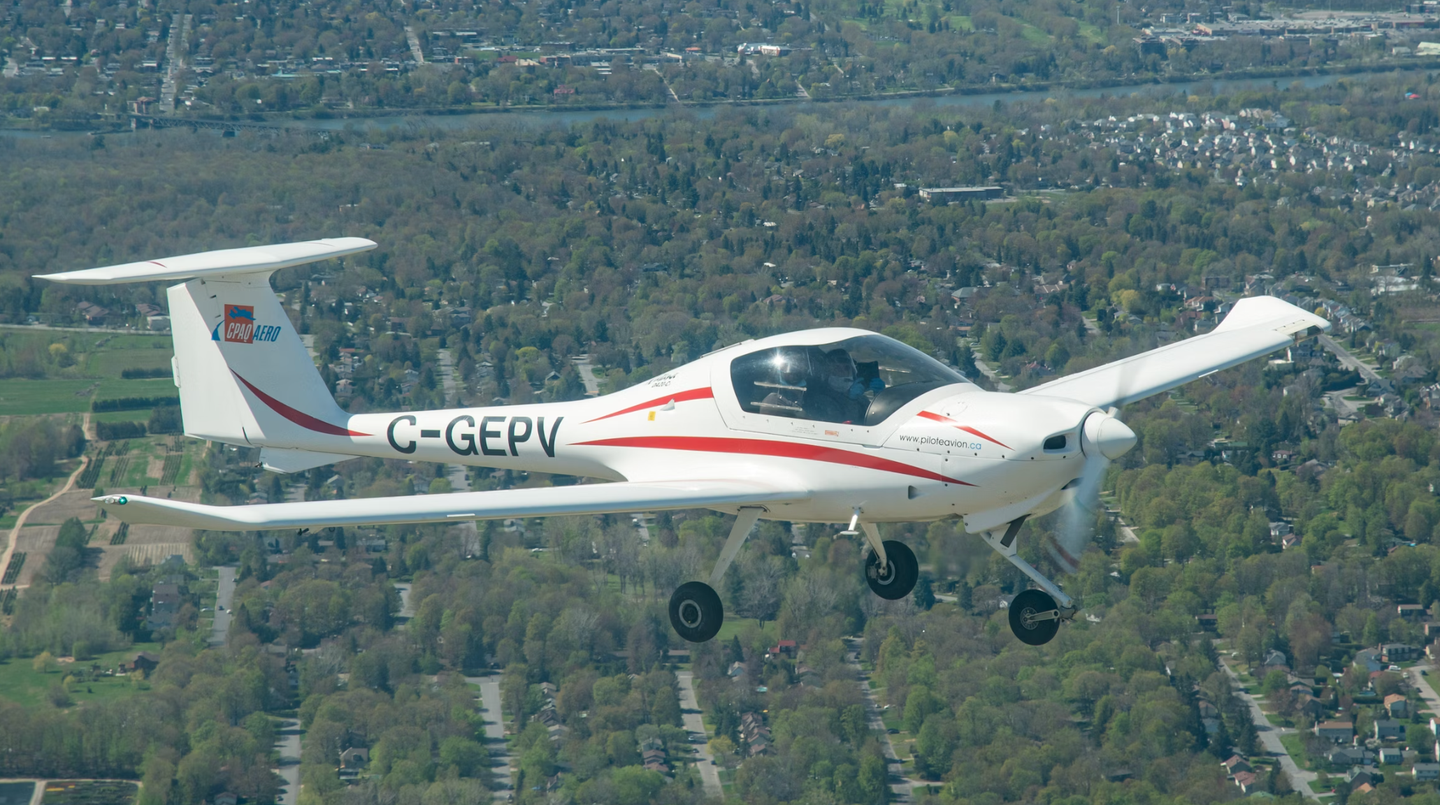Our 2021 Roundup Of Light Twin Aircraft
Until 35 years ago, light twins were a force to be reckoned with. Today, in both the used and new marketplace, they account for a sliver of their former glory, for some really good reasons, though the flip side of that coin, owners insist, is equally compelling.

The Textron Aviation Beechcraft G58 Baron is still in production 52 years after the first one rolled off the line in Wichita. The latest Baron offers sophisticated avionics and the creature comforts Beechcraft owners have come to expect.
Even as late as 35 years ago, twin-engine aircraft occupied a special place in the world of light aircraft. There were more than two dozen models on the market, and the launch of an exciting new model was an important moment for the plane's manufacturer. Pilots of every experience status north of absolute beginner were candidates to buy a twin, and buy them they did. The Piper Aztec, Twin Comanche and Seneca, the Beech Travel Air, the Barons models 55 and 58, the jaunty high-spirited Duke and the lower-cost Duchess were all popular models. Cessna, with its uber-popular 310 (and derivatives), the cabin-class pressurized 421 Golden Eagle and the 340, among a handful of others, filled the market to bursting, along with the oddball but very popular 337 push-pull twin.
In 1979 alone, U.S. manufacturers delivered 2,843 piston twins, the high watermark for the decade, during which American plane makers never delivered fewer than 1,000 piston twins in any given year.
The reason was not just that these planes offered the security of a second engine, though that was their primary selling point. Other big draws were combinations of a twin's often-higher speeds, greater hauling capacity and larger cabin.
One can debate the safety merits of twin-engine light aircraft vis-Ã -vis single-engine models endlessly, and just such a debate has, indeed, been ongoing in our community for the better part of a century. But for much of the earlier part of that conversation, there were a few assumptions about twins that were later called into question.
The first is that big one, that twins are safer, an assumption called into question back in the 1970s by a few somewhat informal studies that concluded that twin-engine safety was largely a myth. The reason was hiding in plain sight. With a single-engine airplane, when an engine (the only one) quits, you're going to land somewhere, somehow. But in a twin, the argument has always gone, you get to keep on flying. Unfortunately, that has not always led to brochure-worthy outcomes. The loss of an engine in a twin is especially dangerous when the engine goes on takeoff or climb out. If not handled quickly and properly, these engine failures usually result in an unsurvivable rolling crash into terrain or airport buildings.
That's why so much of the initial and recurrent training we do in twin-engine aircraft is with one engine caged. Twin-engine pilots need to learn how to respond to such emergencies by second nature because the time it takes to think things through when your twin loses an engine at low altitude is usually not fast enough to survive the failure.
So, the argument goes, given that singles don't have such a critical failure mode, and given that relatively few fatal accidents are caused by the loss of the single's one powerplant, one's odds might just be better in a single than in a twin, at least in that regard. Then again, the counterargument goes, all of the engine failures in twins that result in a safe landing somewhere never make it into the accident statistics, so the lives saved by that second engine are certainly greater than we know or have ever known.
Many of today's twin-engine aircraft, however, are safer in design in a number of ways from earlier models. Counter-rotating props eliminate the problem of one of the engines being more dangerous to lose than the other. Some new models feature full digital authority engine control (FADEC) and will automatically feather the prop (align the blades with the airflow for minimum drag on the dead engine). And all new-production twins feature more crashworthy structures than were required in the glory days, so some crashes are more survivable today.
There are, as you are doubtless aware, fewer than 10 twin-engine models in current production, some of those built in very small numbers. Piper did not sell any of its once-popular Seneca models last year, and Beech sold 15 Barons. Worldwide, twins accounted for fewer than 100 sales, and that has been the case for nearly 20 years now.
Twins still have their fans. Buyers of Beech Baron G58s and Diamond Aircraft DA-62s are shelling out well over a million for one of these gems, and they do so not only because they believe in the additional redundancy, performance and utility these planes offer, but also at least in part because multi-engine aircraft ownership still carries with it a level of status on an altogether different plane.
---Isabel Goyer

Textron Aviationâs Beech Baron has a long and distinguished history as the crown jewel among light twins. It seems counterintuitive that such a legacy design would still be among the top performing in its class, with a high-speed cruise of better than 200 knots, 1,480-nm range and a useful load of 1,559 pounds. That performance comes at a price, however. That price is both monetary (the most expensive twin on this list, by far) as well as in empty weight. With full fuel, the Baron is limited to two passengersâ worth of useful load.
All that is because the Baron in 2021 is still virtually hand-built with robust, expensive materials. Its timeless handling qualities came about as much by instinct as by slide-rule calculations, all springing from the original 1947 V-tail Bonanza, from which the basic wing and control geometry of the Baron is derived and remains unchanged.
With 21st-century Garmin G1000 NXi avionics and cabin amenities that would make a Lexus passenger feel right at home, Barons can keep up with the most advanced modern twins in mission flexibility and passenger comfort. The 300-hp Continentals on the wing burn a combined 36 gallons per hour at cruise for an endurance of around four and a half hours. And at the end of the flight, the rock-solid handling and pothole-proof landing gear give the well-practiced Baron pilot assurance of a safe, smooth arrival.
The Baron certainly isnât the top option for all light-twin buyers, and with only eight delivered last year, one wonders how long the assembly line lights in Wichita will stay on. Other than Lufthansa in the 1970s and â80s, they have probably never been used as trainers. But for the owner-pilot who savors flying hours like vintage wine, there is simply no substitute.
Base price: $1.495 million

John Armstrong of LifeStyle Aviation, North Americaâs top dealer for Diamond Aircraft for the last four years, is a firm believer in strong-arming the general aviation industry in the direction of Jet A-burning piston engines. That includes the pair of 170-hp Austro AE300s occupying the aggressive-looking nacelles on the wings of the DA42. Austro engines that power Diamond aircraft not only burn universally available jet fuel, he says, but they do it more efficiently and with a lower carbon footprint than avgas-consuming engines.
âWhy would anyone choose to fly behind a 1940s-tech engine with mechanical fuel injection and magnetos?â he asked. âThe future of aero engines is in automotive-derived designs, and the FADEC-controlled Austro engines are 21st century tech, based on Mercedes car engines.â
Armstrong believes aircraft buyers are more attuned to this today than when Diamond first introduced the diesel engines. âCustomers would ask us where would they get âdieselâ fuel. Now, most aircraft buyers understand that the fuel for our engines is much more available around the world than leaded avgas. Diamond has been focused on jet-fuel-burning engines for 14 years.â
Comparing Diamondâs line with the competition, Armstrong also notes the DA42âs high-aspect-ratio wing and composite construction as further examples of forward thinking from the Austrian-based OEM.
The four-place DA42 comes standard with Garmin G1000 NXi avionics, a three-axis GFC700 autopilot and a yaw damper. It also comes with a TKS anti-icing system and a high-end leather interior. Max cruise is 197 knots, and regular fuel burn is only 10.4 gph total. With the 74-gallon long-range tankage, the DA42 has 795 nm of range.
Also a darling of the flight-training community, the DA42 is widely used as a multi-engine trainer. Last year, Diamond delivered 62 overall. Armstrong sums up why he thinks that is: âYou get the safety of a twin that burns less fuel than a single, and you can get fuel anywhere.â
Base price: $887,900 (2020 price)

If the four-seat DA42 is the âsport model,â that puts the larger Diamond DA62 in the âflying SUVâ category. The seven-place DA62 fills its nacelles with FADEC-controlled, turbocharged 180-hp AE330 engines burning 11.8 gallons per hour. They motivate the family-size twin to a 192-knot cruise speed for a range of 1,283 nautical miles. Useful load is 1,568 pounds.
The DA62 also features Garminâs upgraded G1000 NXi avionics package, along with the same TKS ice protection system found on the DA42. Also as in the DA42, the interior is upholstered like a luxury sedan, with unique two-three-two seating for seven. Panoramic windows give all passengers a great view of the outside, which helps cut the risk of motion sickness.
Diamond offers a wide range of color schemes for the DA62, or buyers have the option of designing their own. Also, like all Diamond models, the DA62 is eligible for the companyâs factory PistonPower hourly-cost maintenance program. A staple of the business jet industry, âpower by the hourâ programs provide budget predictability by charging a fixed rate per hour for maintenance coverage.
Base price: $1.135 million

Piperâs sole remaining twin (there are no plans to build Senecas in Vero Beach this year), the Seminole is a true survivor. First offered in the late 1970s (then with just 160 ponies per side), it has served university flight programs, dedicated flight academies and mom ân pop flight schools well for decades. And owner-pilots sprinkle the roster of Seminole operators as well, especially those who regularly fly where youâll go for a long swim if your single engine packs it in. A feature well-liked by owner-pilots, the T-tail Seminoleâs counter-rotating engines help mitigate the danger of loss of control after a takeoff engine failure. The two-blade Hartzell constant-speed scimitar props are full-feathering.
New for this year in the Seminole are fuel-injected Lycoming IO-360 B1G6 engines as standard, flat rated at 180 horsepower each. Last yearâs Aspen standby displays have been replaced by the Garmin G5, complementing the Seminoleâs Garmin G1000NXi main avionics suite. Also now standard is Garminâs GTX345 ADS-B In/Out transponder.
Piper calls on the âtried and trueâ character of the Seminole in its brochure, noting that pilots have learned the rudiments of multi-engine flying in them for generations. And with upgraded avionics, amenities and powerplants, the company is confident that many more generations to come will do the same.
Production of Seminoles took a long holiday last year along with the rest of us, dropping from 40 in 2019 to 22 in 2020. And it should be noted that the Piper marketing team makes the point that its published pricing is straight up and âreal-world.â
Base price: $794,116 (standard equipped)

With 22 delivered last year (COVID-reduced from 40 in 2019), the Tecnam P2006T might look like an unlikely success story. Born of light sport technology, the super-light Italian Rotax-powered twin puts the lie to the âtwo engines are automatically more expensiveâ theory, challenging the single-engine Cessna 182âand even the 172 Skyhawkâfor fuel and maintenance economy. Tecnam U.S. Director of Sales Shannon Yeager (a great family name for anyone in aviation) said, âYou can overhaul both engines for less than what youâd pay to overhaul a Skylane engine, and they burn less fuel.â In fact, Yeager calculates overall operating costs as on par with those of a Cessna 172.
In case you think the P2006T must be anemic and underpowered for a four-seater, consider that normal climb rate is 1,140 feet per minute (standard conditions). Shut down one of the engines, and you can still expect 212 fpm, comparable with most other light twins. Single-engine service ceiling is 7,000 feet.
Yeager said with their Garmin G1000 NXi avionics, P2006s are regularly used for civilian transition training for ex-military pilotsâespecially rotary-wing pilotsâsince they can concurrently qualify for their fixed-wing multi- and commercial ratings at operating costs comparable to those of a Skyhawk.
âAll the speeds match up with what you use in a C-182,â he said. âNinety [knots] on approach; 80 in the pattern; 70 on final.â Knowing all that, it might not come as much of a surprise to learn that sales of Tecnam P2006Ts are split roughly 50-50- between flight schools and private owners. With a pair of battle-tested, 2,000-hour-TBO Rotax 912 S3s, who wouldnât want to do 150 knots in a twin for the same cost as flying a Skyhawk? Especially for someone whose regular routes overfly large tracts of wet stuff.
Base price: $440,000

Definitely a niche player in the light-twin market, the P68 is a follow-on to Italyâs 1980s-vintage Partenavia series. But if it fits the mission, the P68 could be the ideal airplane for the job. The Partenavia was, perhaps not surprisingly, designed by Luigi Pascale, who also drew up the Tecnam P2006T.
Florida-based U.S. distributor of Vulcanair products Mike McMann said most Vulcanair sales worldwide these days are to government or para-public agencies. In fact, the clear-nose variant of the 1980sâ P68 (sometimes referred to as a âfixed-wing helicopterâ) was ideal for missions such as border patrol, law enforcement, pipeline patrol, wildlife managementâanything involving a mission where high visibility is required.
If your requirement includes an agile, well-proven utility piston twin, look him up and give Mike a call.
Base price: $869,000

Subscribe to Our Newsletter
Get the latest Plane & Pilot Magazine stories delivered directly to your inbox






